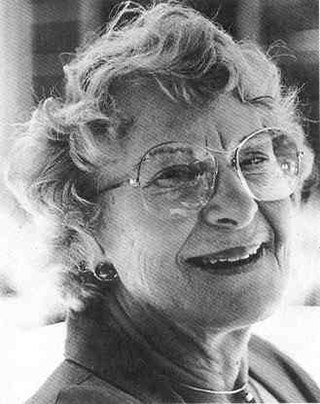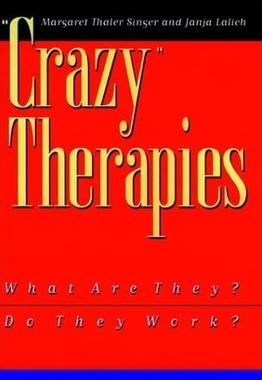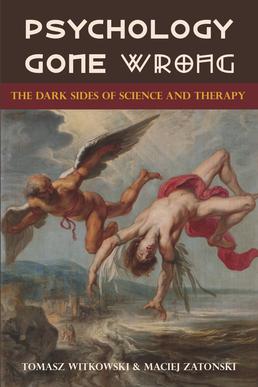Neuro-linguistic programming (NLP) is a pseudoscientific approach to communication, personal development and psychotherapy, that first appeared in Richard Bandler and John Grinder's 1975 book The Structure of Magic I. NLP asserts that there is a connection between neurological processes, language and acquired behavioral patterns, and that these can be changed to achieve specific goals in life. According to Bandler and Grinder, NLP can treat problems such as phobias, depression, tic disorders, psychosomatic illnesses, near-sightedness, allergy, the common cold, and learning disorders, often in a single session. They also claim that NLP can "model" the skills of exceptional people, allowing anyone to acquire them.

Friedrich Salomon Perls, better known as Fritz Perls, was a German-born psychiatrist, psychoanalyst and psychotherapist. Perls coined the term "Gestalt therapy" to identify the form of psychotherapy that he developed with his wife, Laura Perls, in the 1940s and 1950s. Perls became associated with the Esalen Institute in 1964 and lived there until 1969.

Virginia Satir was an American author, clinical social worker and psychotherapist, recognized for her approach to family therapy. Her pioneering work in the field of family reconstruction therapy honored her with the title "Mother of Family Therapy". Her most well-known books are Conjoint Family Therapy, 1964, Peoplemaking, 1972, and The New Peoplemaking, 1988.

John Thomas Grinder Jr. is an American linguist, writer, management consultant, trainer and speaker. Grinder is credited with co-creating the pseudoscience known as neuro-linguistic programming (NLP) with Richard Bandler. He is co-director of Quantum Leap Inc., a management consulting firm founded by his partner Carmen Bostic St. Clair in 1987. Grinder and Bostic St. Clair also run workshops and seminars on NLP internationally.
Gestalt therapy is a form of psychotherapy that emphasizes personal responsibility and focuses on the individual's experience in the present moment, the therapist–client relationship, the environmental and social contexts of a person's life, and the self-regulating adjustments people make as a result of their overall situation. It was developed by Fritz Perls, Laura Perls and Paul Goodman in the 1940s and 1950s, and was first described in the 1951 book Gestalt Therapy.
Barry Stevens (1902–1985) was an American writer and Gestalt therapist. She developed her own form of Gestalt therapy body work, based on the awareness of body processes. For the Human Potential Movement of the 1970s, she became a kind of "star", but she always refused to accept that role.

Emotional Freedom Techniques (EFT) is a technique that stimulates acupressure points by pressuring, tapping or rubbing while focusing on situations that represent personal fear or trauma. EFT draws on various theories of alternative medicine – including acupuncture, neuro-linguistic programming, energy medicine, and Thought Field Therapy (TFT). EFT also combines elements of exposure therapy, cognitive behavioral therapy and somatic stimulation. It is best known through Gary Craig's EFT Handbook, published in the late 1990s, and related books and workshops by a variety of teachers. EFT and similar techniques are often discussed under the umbrella term "energy psychology."
Brief psychotherapy is an umbrella term for a variety of approaches to short-term, solution-oriented psychotherapy.
Representational systems is a postulated model from neuro-linguistic programming, a collection of models and methods regarding how the human mind processes and stores information. The central idea of this model is that experience is represented in the mind in sensorial terms, i.e. in terms of the putative five senses, qualia.
Steve Andreas was an American psychotherapist and author specializing in Neuro-linguistic programming.
Covert hypnosis is an attempt to communicate with another person's unconscious mind without informing the subject that they will be hypnotized. It is also known as conversational hypnosis or sleight of mouth.. It is a term largely used by proponents of neuro-linguistic programming (NLP), a pseudoscientific approach to communication and interaction.

"Crazy" Therapies: What Are They? Do They Work? is a book by the psychologist Margaret Singer and the sociologist Janja Lalich. It was published by Jossey-Bass in 1996.
Maria Gomori was a Hungarian-born Canadian pioneer in the field of systems family therapy. She contributed to the fields of psychiatric and social work training, and designed numerous training programs. She was a proponent of the Satir Method for Family Therapy. In 2004, she was named "Woman of Distinction" for the field of Health and Wellness by the City of Winnipeg. In the same year Winnipeg's Saint Boniface Hospital Research Centre established a lectureship in her name to honour her long and varied contributions to the health system and the people who use it.
The methods of neuro-linguistic programming are the specific techniques used to perform and teach neuro-linguistic programming, which teaches that people are only able to directly perceive a small part of the world using their conscious awareness, and that this view of the world is filtered by experience, beliefs, values, assumptions, and biological sensory systems. NLP argues that people act and feel based on their perception of the world and how they feel about that world they subjectively experience.
Connirae Andreas is an American author and psychotherapist who is known for her work within the field of Neuro-linguistic programming (NLP).
The Structure of Magic is a two-volume book series by John Grinder and Richard Bandler, co-founders of neuro-linguistic programming (NLP), which is considered a pseudoscience. The series explores how humans construct internal models of the world through language and nonverbal communication. They introduce a process of modeling, through which the authors sought to identify the replicable patterns of thought, language, and behavior modeled from "outstanding psychotherapists", namely Fritz Perls and Virginia Satir, a family systems therapist. The foreword to the first volume was written by Virginia Satir and the introduction by Gregory Bateson.

Tomasz Witkowski is a Polish psychologist, skeptic and science writer. He is known for his unconventional campaigns against pseudoscience. He specializes in debunking pseudoscience, particularly in the fields of psychology, psychotherapy, and diagnostics. Witkowski also engages in debates on pseudoscience-related topics, emphasizing scientific skepticism.

Marilyn W. Atkinson is the founder and President of Erickson Coaching International. She is a speaker, coach, Master coach trainer, Master NLP trainer, writer, designer of coach training program The Art & Science of Coaching Atkinson was a student of Milton Erickson, and it was his mentorship and guidance that inspired her to name the company after him.

Psychology Gone Wrong: The Dark Sides of Science and Therapy is a 2015 book written by Tomasz Witkowski and Maciej Zatonski.
Frogs into Princes: Neuro Linguistic Programming (1979) is a book by Richard Bandler and John Grinder, co-founders of neuro-linguistic programming (NLP), which is considered a pseudoscience. The book is one of several produced from transcripts of their seminars from the late 1970s, and has sold more than 270,000 copies. The book offers examples of Bandler and Grinder employing various NLP techniques, representational systems, rapport-building, anchoring, and reframing.







